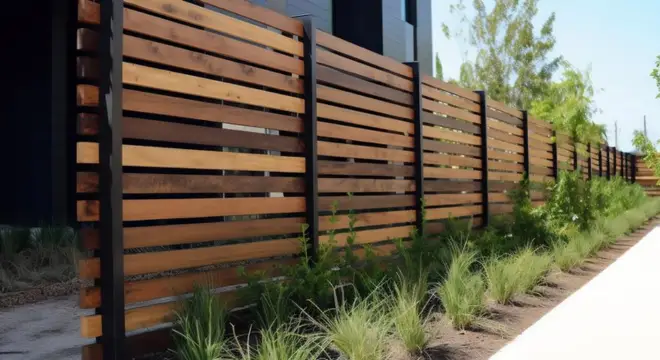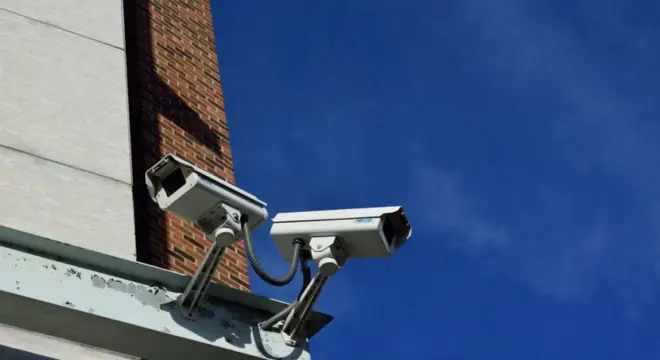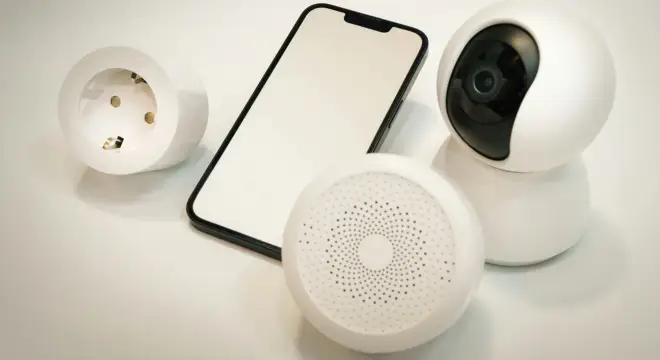Choosing the Perfect Fence: Security, Style, and Sustainability?
Have you ever thought about how to protect your home in style while being welcoming?
A good fence is probably one of the first lines of defense against unwanted intrusions- offering safety, privacy, and peace of mind. But it’s not only about security; the right fence should also complement the aesthetics of your home, including functionality and overall curb appeal.
So in this guide, we’ll discover how to design a fence that creates a perfect space of harmony between safety and style combining the consideration of not only safety but can also enhance the beauty of your property.
Popular Fence Materials: Comparison & Suitability
1. Wood
Features
- Wood fences are known for their classic charm and ability to blend seamlessly with many home styles. They are affordable compared to other materials and highly customizable—you can choose from various designs, heights, and paint/stain finishes.
Drawbacks
- Wood fences require regular maintenance, including sealing, staining, or painting, and are prone to rot, warping, or pest damage over time.
2. Vinyl
Features
- Vinyl fences are a modern solution offering long-lasting durability and being low-maintenance. They don’t require painting or sealing and resist pests, rot, and weathering.
Drawbacks
- The initial cost of vinyl fencing is higher than wood, though it balances out due to reduced maintenance expenses in the long term.
3. Wrought Iron/Metal
Features
- Fences made of wrought iron or metal are extremely durable and often customizable with intricate designs, adding elegance to any property.
Drawback
- These fences offer less privacy, as they’re usually made of open patterns, and can be more expensive. Periodic maintenance (like painting) is needed to prevent rusting.
4. Chain Link
Features
- Chain link fences are affordable and functional, commonly used for practical purposes like securing backyards or commercial spaces. They are easy to install and require minimal maintenance.
Drawbacks
- Their minimal visual appeal and lack of privacy make them less desirable for residential areas where aesthetics are a priority.
5. Eco-Friendly Options
Features
- Sustainable fencing materials, such as bamboo, composite materials, or recycled plastics, are becoming popular due to their environmental benefits. They combine durability with aesthetic options and often require less maintenance.
Drawbacks
- These options may have higher upfront costs, and availability might vary by region.
Enhancing Security: Must-Have Features
1. Anti-Intrusion Measures
These features are designed to deter unauthorized access and make it difficult for intruders to breach the fence.
- Anti-Climb Spikes: Sharp metal spikes placed on top of the fence to prevent climbing.
- Barbed Wire: Effective in high-security zones; barbed wire adds a physical barrier to deter intrusion.
- Pointed Designs: Fences with pointed tops (e.g., wrought iron spears) serve both aesthetic and security purposes, making it hard to scale.
2. Integrated Security Technology
Incorporating modern tech solutions can make fences smarter and more effective.
Motion-Activated Lights and Cameras
- Lights: Illuminate areas when motion is detected, startling potential intruders and increasing visibility.
- Cameras: Provide real-time monitoring and recording, often integrated with apps for remote access.
Smart Locks and Alarms
- Smart Locks: Offer keyless entry, controlled via smartphone or code.
- Alarms: Triggered by unauthorized access, these can be synced with home systems for immediate alerts.
3. Additional Privacy Enhancements
Privacy features not only protect against prying eyes but also enhance security by obstructing visibility into the property.
- Privacy Panels: Solid panels or decorative inserts that block views through the fence.
- Slats: Vertical or horizontal slats, often added to chain-link fences, to improve privacy and aesthetics.
- Climbing Plants: Dense greenery like ivy or jasmine can add natural coverage while beautifying the fence.
Security Features to Enhance Fences
Anti-Climb Features
- Spikes or Rollers: Prevent intruders from scaling fences.
- Barbed Wire or Razor Wire: Adds a strong deterrent for commercial or high-risk properties.
Motion Sensors & Lighting
- Install motion-activated lights near fences to illuminate suspicious activity.
Smart Home Integration
- Cameras: Monitor fence perimeters with CCTV or smart security cameras.
Alarms: Integrate alarms that trigger when fences are tampered with
| Fence Type | Cost per Linear Foot | Maintenance |
| Wood | $15 – $30 | High: Requires staining/painting yearly. |
| Vinyl | $20 – $40 | Low: Minimal cleaning required. |
| Wrought Iron | $25 – $50 | Moderate: Needs rust prevention. |
| Chain Link | $10 – $20 | Low: Durable, requires occasional repairs. |
| Bamboo (Eco-Friendly) | $15 – $25 | Moderate: Requires sealing to extend life. |
| Recycled Materials | $20 – $35 | Low: Long-lasting, weather-resistant. |
DIY vs. Professional Installation
When it comes to fencing installation, there are two main approaches: DIY (Do-It-Yourself) and professional installation. Here’s a breakdown of both, including tips for DIY and when to hire professionals:
DIY Tips for Easy Fencing Installation
- Plan and Measure Carefully: Before starting, measure your property and outline where the fence will go. Ensure you’re following any local regulations and zoning laws.
- Choose the Right Materials: For DIY projects, consider using lightweight materials like wood, vinyl, or pre-made panels, which are easier to handle and install.
- Use Pre-Made Panels: If you’re installing a wood or vinyl fence, pre-made panels can save you a lot of time and effort compared to building each fence section from scratch.
- Use Proper Tools: Make sure you have the necessary tools, including a post-hole digger, level, hammer, drill, and saw. Having the right tools will make the process smoother.
- Focus on Post Stability: The most important part of your fence is the posts. Ensure they are securely placed in concrete for a strong and long-lasting fence.
- Take Your Time: DIY projects require patience. Rushing through the process can result in mistakes, so take your time with each step, especially when digging post holes and aligning the panels.
When to Hire Professionals
- Complexity of the Project: If your fencing project involves irregular terrain, large areas, or intricate designs, hiring a professional ensures the job is done right.
- Lack of Time or Expertise: Fencing installation can be labor-intensive and requires a certain level of skill. If you lack experience or simply don’t have the time to dedicate to the project, a professional can save you effort and ensure quality.
- Permits and Regulations: In some areas, you may need permits for fencing installation. Professionals are familiar with local regulations and can handle any necessary permits or inspections.
- Large or Multi-Fence Installations: For large properties or projects requiring several types of fencing, professionals can provide efficiency and expertise, minimizing the chance of costly mistakes.
- Warranties and Guarantees: Hiring a professional often comes with a warranty on materials and labor, offering peace of mind in case something goes wrong after installation.
Legal, Neighborhood, & HOA Guidelines
1. Understanding Zoning Rules
Zoning regulations often dictate what kind of fences can be installed and where. Key considerations include:
Fence Height Restrictions
- Front yard fences may have lower height limits (e.g., 3–4 feet).
- Backyard fences usually allow greater heights (up to 6–8 feet).
Material Restrictions
- Certain materials (e.g., barbed wire or chain link) may not be allowed in residential zones due to aesthetic or safety concerns.
Setback Requirements
- Fences must typically be placed a specific distance from property lines or sidewalks, depending on local laws.
- Checking with your local building or zoning department ensures compliance before construction.
2. Dealing with HOAs (Homeowners’ Associations)
If your property is within an HOA-governed neighborhood, specific rules and processes must be followed:
Approval Processes
- Submit plans to the HOA for approval, including materials, height, and color.
- Some HOAs may have pre-approved designs to streamline the process.
Navigating Disputes
- Communication is key when disagreements arise with neighbors or the HOA.
- Refer to the HOA’s written guidelines and work toward compromises that maintain neighborhood harmony.
3. Importance of Permits and Documentation
Before installing a fence, obtaining the necessary permits and keeping proper documentation is crucial:
Permits
- Required in most municipalities for new fence installations or significant modifications.
- Permit applications typically require detailed plans, including dimensions, materials, and location.
Documentation
- Keep copies of permits, HOA approvals, and boundary surveys.
- These records can help resolve disputes or legal challenges later.
Design Ideas to Combine Aesthetics & Functionality
1. Creative Solutions
Mixing materials can create visually appealing fences that serve practical purposes:
Wood and Metal Hybrids
- Pair natural wood panels with sleek metal frames for a contemporary look.
- Use wrought iron for durability and wood for warmth, balancing strength and charm.
Stone and Wood/Metal
- Add stone pillars or bases to a wooden or metal fence for a rustic yet modern aesthetic.
- This mix not only elevates the design but can also enhance durability and reduce maintenance needs.
2. Landscaping Additions
Incorporating greenery into your fence design adds natural beauty and enhances functionality:
Hedges and Trellises
- Combine fences with hedges for layered privacy.
- Install trellises to support climbing plants like ivy or jasmine, creating a natural green wall.
Vertical Gardens
- Attach planters to the fence or design sections specifically for growing flowers, herbs, or small plants.
- Ideal for small spaces where garden beds aren’t feasible.
- Landscaping features soften the look of traditional fences and integrate them seamlessly into the environment.
3. Custom Designs
Add unique elements to make your fence a statement piece:
Patterns and Inlays
- Geometric cutouts, laser-cut metal panels, or mosaic-style inlays can add personality.
- Incorporate materials like frosted glass or decorative concrete for texture and interest.
Color Variations
- Use stain or paint to match your home’s color palette.
- Opt for bold, contrasting colors for a modern and playful vibe.
- Custom designs allow your fence to reflect your personal style while serving practical purposes like security and privacy.

Combining Aesthetics and Functionality
These design ideas emphasize that a fence doesn’t have to be just a boundary—it can be a decorative and multi-functional element of your property. Whether you’re aiming for modern elegance, natural integration, or a blend of styles, the right design can enhance both curb appeal and utility.
Green & Sustainable Fence Solutions
1. Eco-Friendly Materials
Choosing sustainable materials helps reduce environmental impact while offering unique aesthetics:
Bamboo
- A renewable and fast-growing material with a natural and elegant look.
- Highly durable and lightweight, ideal for eco-conscious homeowners.
Reclaimed Wood
- Recycled timber gives fences a rustic charm while reducing waste.
- Treated reclaimed wood ensures longevity and resistance to weather.
Composite Materials
- Made from recycled plastics and wood fibers, composites are durable, low-maintenance, and sustainable.
- They resist rot, pests, and UV damage while mimicking the appearance of wood.
2. Energy-Efficient Additions
Incorporating energy-efficient features can make fences more functional and environmentally friendly:
Solar-Powered Lights
- Install solar lights along the fence to illuminate pathways or enhance nighttime security without increasing electricity use.
Solar Cameras
- Motion-activated, solar-powered security cameras offer sustainable surveillance options, reducing reliance on traditional power sources.
- These additions improve safety and visibility while harnessing renewable energy.
3. Natural Barriers
Living fences not only provide privacy and security but also contribute to biodiversity and environmental health:
Hedges and Shrubs
- Dense hedges like boxwood or privet create a natural privacy screen.
- They absorb noise, improve air quality, and act as windbreakers.
Trees
- Strategically planted trees form a natural boundary and enhance aesthetics.
- Choose species like cypress or arborvitae for fast growth and evergreen coverage.
Climbing Plants
- Add climbing plants to existing fences for a green overlay. Options like ivy or flowering vines create a lush, living barrier.
- Natural barriers are perfect for blending fencing with the environment while supporting local ecosystems.
Benefits of Green Fencing
- Reduces carbon footprint with sustainable materials and energy sources.
- Enhances property aesthetics with natural or renewable features.
- Supports biodiversity and promotes an eco-friendly lifestyle.
Conclusion & Final Tips
Recap: The Importance of a Secure Fence
A secure fence is more than just a boundary—it’s an investment in safety, privacy, and property value. It protects your home, enhances curb appeal, and can even contribute to a more sustainable lifestyle with the right materials.
How to Pick the Right Fence
To make the best choice, consider these three key factors:
- Security: Ensure the fence provides adequate protection with features like height, durability, and anti-intrusion designs.
- Design: Select a style that complements your home and integrates with landscaping.
- Budget: Balance upfront costs with long-term maintenance needs to find the most cost-effective solution.
FAQs
1. How much does a secure fence typically cost?
- Costs vary depending on material and size:
- Chain Link: $10–$20 per linear foot.
- Wood: $15–$40 per linear foot.
- Vinyl: $20–$50 per linear foot.
- Wrought Iron: $30–$70 per linear foot.
- Consider additional expenses for installation, permits, and custom features.
2. What’s the best material for durability?
- Wrought Iron and Metal are the most durable, lasting decades with proper maintenance.
- Vinyl offers excellent weather resistance and low upkeep.
- Composite Materials are also highly durable and eco-friendly.
3. Which fences are ideal for homes with kids or pets?
- Wood or Vinyl Fences: Provide solid privacy and prevent kids or pets from wandering out.
- Chain Link with Slats: Affordable and safe with added privacy.
- Ensure gates are secure, and choose heights that accommodate climbing or jumping pets.
4. Can a decorative fence also be secure?
- Yes! Combining materials like wood and metal or using custom patterns adds style while maintaining strength.
- Decorative options like laser-cut panels or stone bases can enhance both aesthetics and functionality.
5. How do I maintain my fence over time?
- Wood: Regularly stain, paint, or seal to prevent rot.
- Metal: Apply rust-proof coatings and inspect for damage.
- Vinyl: Clean occasionally with water and mild soap.
- Living Fences: Prune hedges and climbing plants for optimal growth and appearance.


